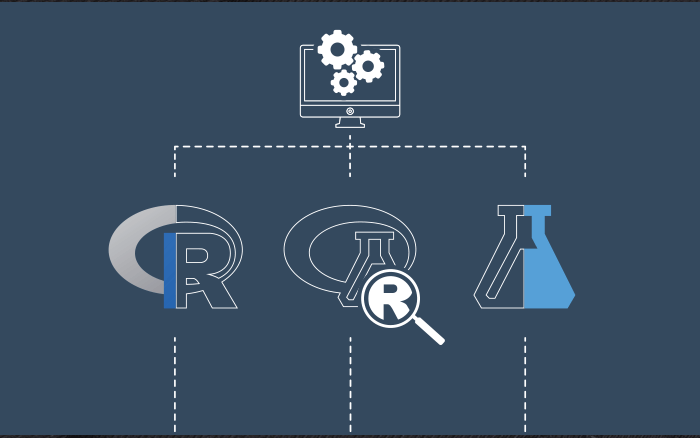
(R Example for Citizen Data Scientist & Business Analyst)
R Program to Check Prime Number
Example to check whether an integer (entered by the user) is a prime number or not using control statements.
A positive integer greater than 1 which has no other factors except 1 and the number itself is called a prime number.
Numbers 2, 3, 5, 7, 11, 13 etc. are prime numbers as they do not have any other factors.
But, 6 is not prime (it is composite) since, 2 x 3 = 6.
Example: Check Prime Number
# Program to check if the input number is prime or not
# take input from the user
num = as.integer(readline(prompt="Enter a number: "))
flag = 0
# prime numbers are greater than 1
if(num > 1) {
# check for factors
flag = 1
for(i in 2:(num-1)) {
if ((num %% i) == 0) {
flag = 0
break
}
}
}
if(num == 2) flag = 1
if(flag == 1) {
print(paste(num,"is a prime number"))
} else {
print(paste(num,"is not a prime number"))
}
Output 1
[1] "25 is not a prime number"
Output 2
Enter a number: 19 [1] "19 is a prime number"
Here, we take an integer from the user and check whether it is prime or not. Numbers less than or equal to 1 are not prime numbers.
Hence, we only proceed if the num is greater than 1. We check if num is exactly divisible by any number from 2 to num – 1.
If we find a factor in that range, the number is not prime. Else the number is prime.
We can decrease the range of numbers where we look for factors.
In the above program, our search range is from 2 to num – 1.
We could have used the range, [2, num / 2] or [2, num ** 0.5]. The later range is based on the fact that a composite number must have a factor less than square root of that number. Otherwise the number is prime.
Python Examples for Beginners: Python Code to Check Prime Number
R Examples for Beginners – R Program to Check Prime Number
Free Machine Learning & Data Science Coding Tutorials in Python & R for Beginners. Subscribe @ Western Australian Center for Applied Machine Learning & Data Science.
Western Australian Center for Applied Machine Learning & Data Science – Membership
Sign up to get end-to-end “Learn By Coding” example.
Introduction to Applied Machine Learning & Data Science for Beginners, Business Analysts, Students, Researchers and Freelancers with Python & R Codes @ Western Australian Center for Applied Machine Learning & Data Science (WACAMLDS) !!!
Latest end-to-end Learn by Coding Projects (Jupyter Notebooks) in Python and R:
Applied Statistics with R for Beginners and Business Professionals
Data Science and Machine Learning Projects in Python: Tabular Data Analytics
Data Science and Machine Learning Projects in R: Tabular Data Analytics
Python Machine Learning & Data Science Recipes: Learn by Coding
Disclaimer: The information and code presented within this recipe/tutorial is only for educational and coaching purposes for beginners and developers. Anyone can practice and apply the recipe/tutorial presented here, but the reader is taking full responsibility for his/her actions. The author (content curator) of this recipe (code / program) has made every effort to ensure the accuracy of the information was correct at time of publication. The author (content curator) does not assume and hereby disclaims any liability to any party for any loss, damage, or disruption caused by errors or omissions, whether such errors or omissions result from accident, negligence, or any other cause. The information presented here could also be found in public knowledge domains.